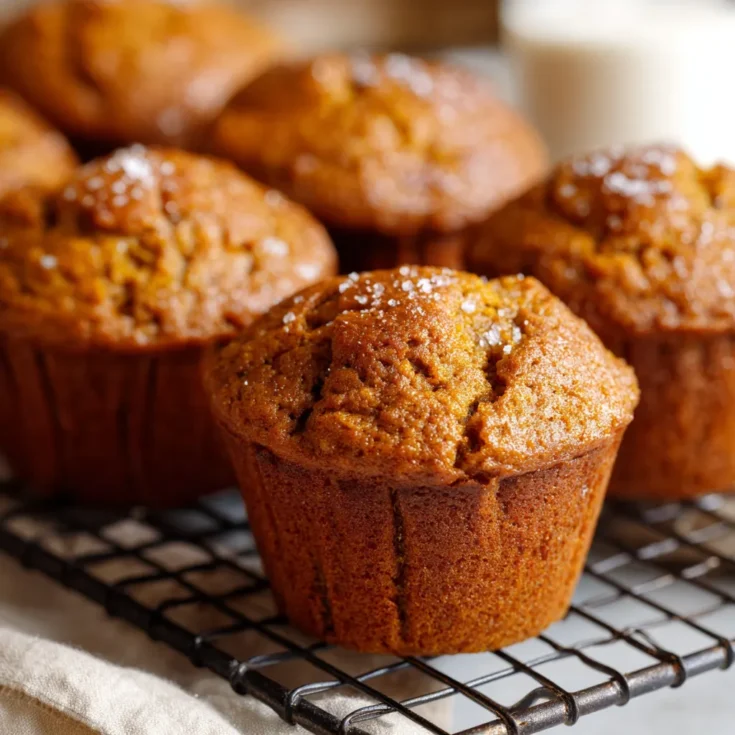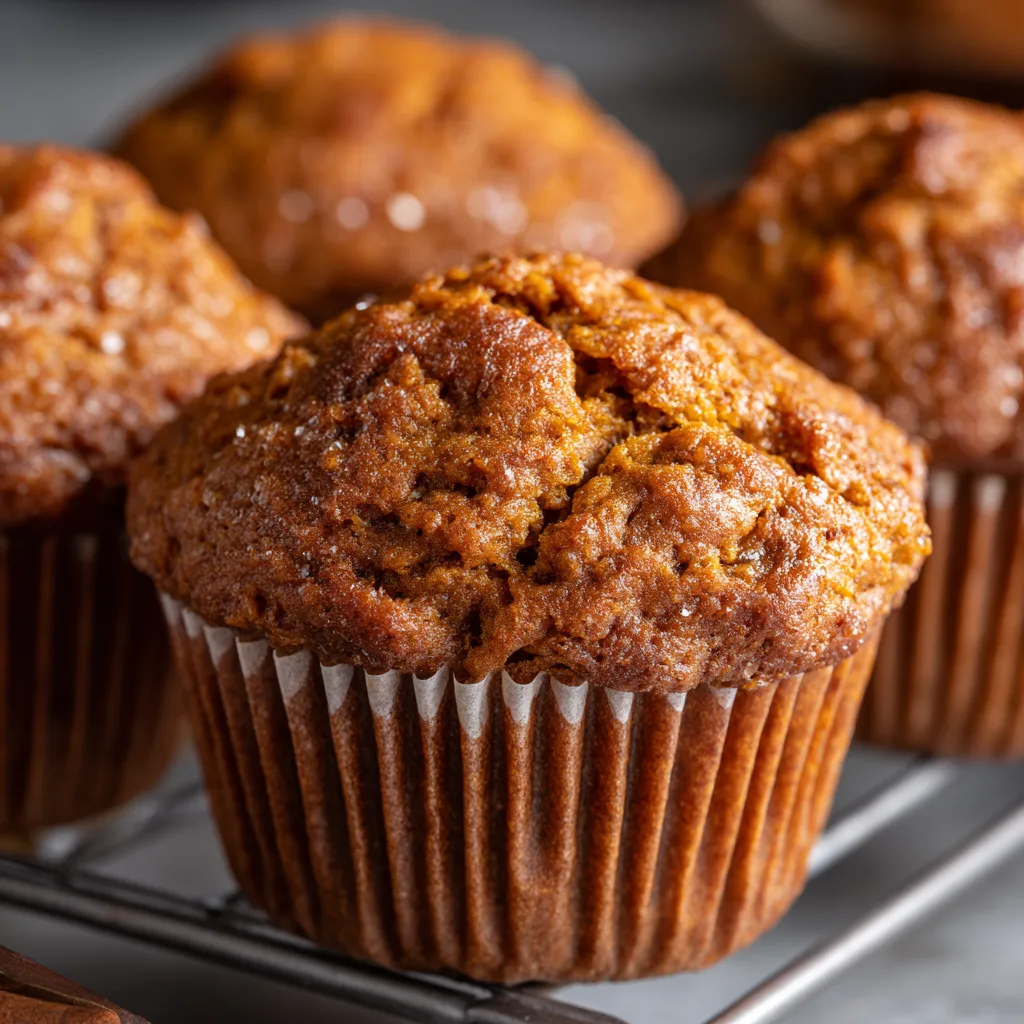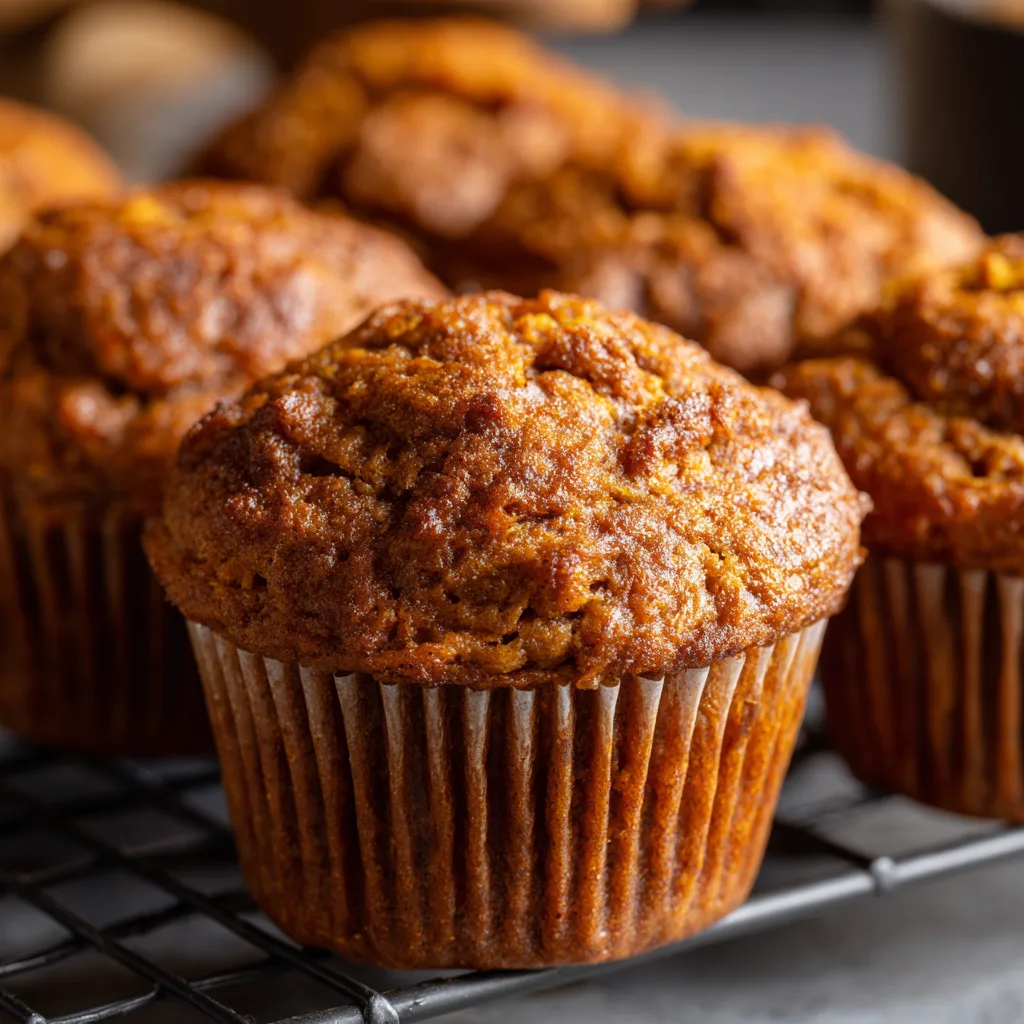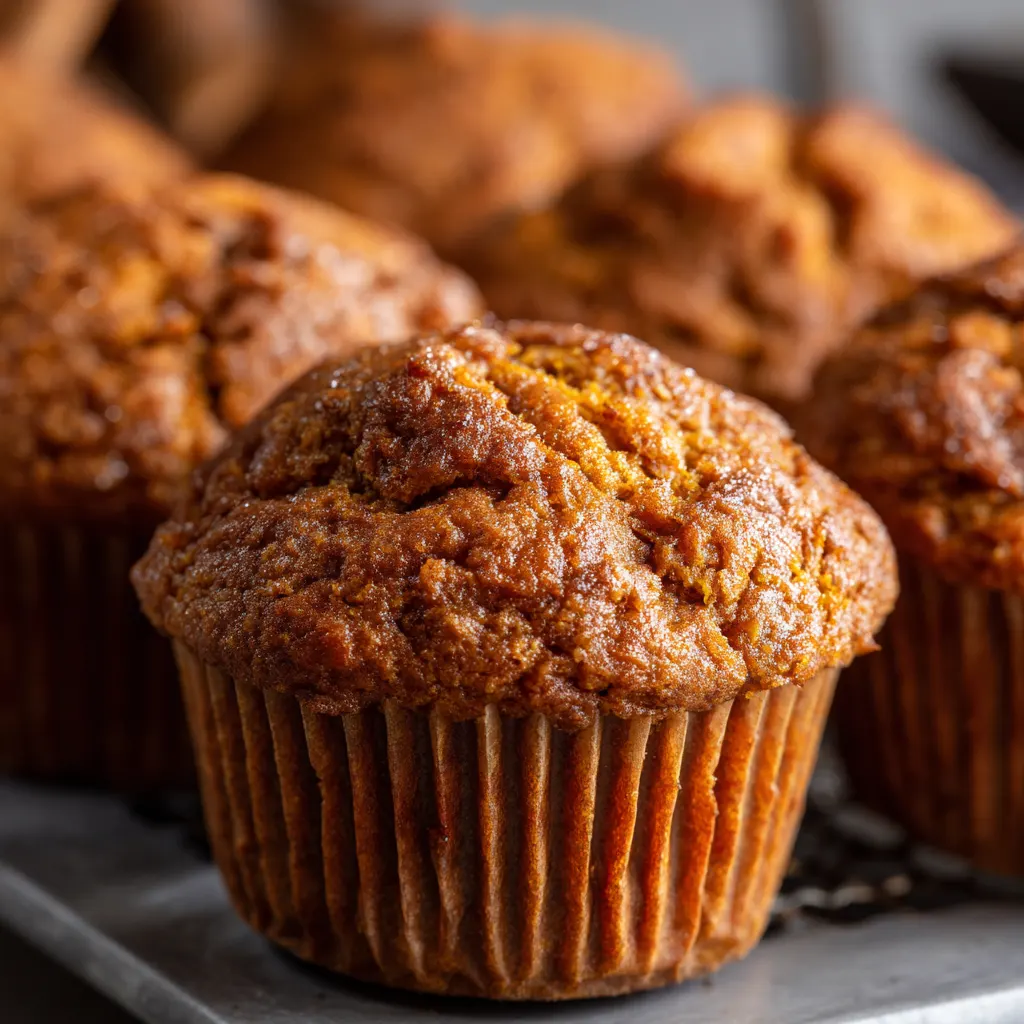Baked Spiced Pumpkin Muffins
Why These Muffins Are So Loved
Baked spiced pumpkin muffins capture the essence of fall in every bite. Their warm, fragrant spices fill the kitchen with comfort. Each muffin delivers a soft, moist texture that melts in your mouth. Best of all, they’re simple to make with everyday ingredients. Whether you’re baking for breakfast, a snack, or a cozy weekend treat, these muffins never disappoint. The balanced sweetness and rich pumpkin flavor make them an autumn favorite. With minimal prep and maximum flavor, they offer everything you want from a seasonal homemade bake. No fuss—just pure, spiced delight.
What Makes Them Different from Regular Pumpkin Muffins
These aren’t just pumpkin muffins—they’re pumpkin muffins elevated. The difference lies in the deep, aromatic spice blend. Cinnamon, nutmeg, ginger, and cloves create layers of flavor that stand out. A buttery streusel topping adds texture, giving each bite a soft crunch. Unlike basic pumpkin versions, spiced pumpkin muffins balance moisture with structure, holding their shape while staying fluffy. They also tend to rise higher, giving that bakery-style dome. If you want more than just pumpkin flavor, these muffins offer complexity and a polished finish that sets them apart from the classic.
At-a-Glance Summary of the Recipe
These baked spiced pumpkin muffins yield 12 fluffy, flavor-packed treats. Prep time is about 15 minutes, with a 20–25 minute bake. You’ll need pumpkin purée, a warm spice blend, flour, sugar, eggs, and oil or butter. Optional mix-ins like nuts or chocolate chips add variety. They’re naturally vegetarian, and you can easily make them dairy-free. These muffins store well and freeze beautifully, making them perfect for meal prep or holiday gatherings. Simple steps, pantry-friendly ingredients, and rich seasonal flavor make this recipe a go-to for fall baking success.
Key Ingredients & Flavor Components
Essential Ingredients
Pumpkin Purée – Canned vs Fresh (Avoid Pie Filling)
Pumpkin is the heart of these muffins, but not all pumpkin is equal. Canned pumpkin purée delivers consistent texture and flavor. It’s thick, smooth, and easy to measure. Fresh pumpkin can work, but it must be well-drained and mashed until silky. Be sure to avoid pumpkin pie filling—it includes added sugar and spices, which can throw off the balance. For the best results, stick with 100% pure pumpkin purée. It gives the muffins rich flavor and the ideal amount of moisture without turning the batter watery or unpredictable.
Spice Blend – Cinnamon, Nutmeg, Ginger, Cloves, and More
What sets spiced pumpkin muffins apart is the spice mix. A blend of cinnamon, nutmeg, ginger, cloves, allspice, and cardamom builds warm, fragrant layers of flavor. Homemade spice blends offer control—you can tweak amounts or leave out spices you don’t love. Store-bought pumpkin spice blends are convenient but vary in intensity. The key is balance. No single spice should overpower the rest. Use fresh spices when possible. Their vibrant aroma brings out the earthiness of the pumpkin and elevates the overall taste.
Sweeteners – Brown Sugar and Granulated Sugar
The right mix of sugars is essential for flavor and texture. Brown sugar adds depth and moisture, thanks to its molasses content. It complements the spices and enhances the muffin’s softness. Granulated sugar gives structure and lightens the crumb. Together, they create a rich, balanced sweetness without becoming cloying. Using only one type may result in a flat taste or a dense muffin. The blend of both sugars ensures a flavorful, tender bite every time.
Fat and Binding Agents – Butter, Oil, Yogurt, and Eggs
Fat is crucial for moisture, richness, and softness. You can use melted butter for flavor or oil for an ultra-moist texture. Yogurt works as a lighter option, adding a subtle tang and extra tenderness. Eggs act as binders and help the muffins rise. For dairy-free or lighter versions, swap butter with coconut oil or yogurt with applesauce. Just make sure the substitutions keep the moisture balanced. The right fat and eggs ensure the muffins hold together without becoming greasy or dry.
Optional Add-Ins and Toppings
Streusel Topping or Crumb Topping – Crunch and Contrast
A crumbly topping transforms simple muffins into bakery-style treats. A basic streusel combines flour, butter, brown sugar, and a touch of spice. Some versions include chopped pecans for added crunch. This topping creates a golden crust that contrasts with the soft muffin below. It also locks in moisture and adds visual appeal. Streusel is easy to make and worth the extra step for added flavor and texture.
Mix-Ins – Nuts, Chocolate Chips, and Dried Fruit
Mix-ins add texture and personality. Chopped pecans or walnuts bring crunch and a nutty aroma. Chocolate chips offer sweet bursts that pair beautifully with the warm spices. Dried cranberries or raisins introduce tartness and chewiness. You can mix and match based on taste or season. Just don’t overdo it—about half a cup is enough to enhance the muffins without overwhelming the base flavors. Each bite stays balanced, flavorful, and full of autumn charm.
Method & Baking Science
Step-by-Step Method Explained
Mixing Dry Ingredients Separately Prevents Gluten Overdevelopment
Start by whisking together the dry ingredients in a separate bowl. This includes flour, baking soda, baking powder, salt, and all your spices. Separating them from the wet mix allows even distribution and prevents clumping. It also helps avoid overmixing once the wet and dry parts combine. Overmixing activates gluten, which can make muffins tough and chewy. A light whisk blends the spices and leavening agents evenly, so every bite tastes consistent and well-balanced.
Mixing Wet Ingredients – Blend Sugar, Fat, Eggs, and Pumpkin Smoothly
In another bowl, combine the sugar, oil or melted butter, eggs, and pumpkin purée. Use a whisk or hand mixer to blend until the mixture turns smooth and glossy. Mixing sugar with the fat first helps break down any graininess and jumpstarts the emulsification process. Eggs should be at room temperature for better incorporation. Add the pumpkin last to lock in moisture and balance the texture. This wet base should be thick but pourable, ready to bring the batter together without lumps or dryness.
Folding Wet into Dry – The Key to Moist, Airy Muffins
Pour the wet mixture into the dry bowl. Gently fold using a rubber spatula or wooden spoon. Use slow, circular motions—scooping from the bottom and turning the bowl as you go. This technique prevents deflating the batter and keeps the muffins soft. Fold just until the flour disappears; don’t stir. Overmixing will ruin the texture. The batter should be slightly lumpy, not perfectly smooth. This step ensures a light, fluffy crumb with just the right density.
Baking Temperature and Timing Techniques
Start with a high oven temperature—around 425 °F—for the first five minutes. This activates the leavening agents quickly and helps the muffins rise high with domed tops. After the initial rise, reduce the heat to 350 °F and continue baking. The typical bake time ranges from 20 to 30 minutes, depending on muffin size and oven type. Check doneness with a toothpick: it should come out clean or with a few moist crumbs. Avoid overbaking, which dries out the crumb.
Storage, Freezing, and Reheating
To keep muffins fresh, store them in an airtight container lined with paper towels. This absorbs excess moisture and keeps the tops from getting sticky. For longer storage, place a few saltines in the container—they help control humidity. Store at room temperature for up to three days.
Freezing is simple. Let muffins cool completely, then wrap each in plastic wrap and store in a freezer bag. They keep well for two to three months. To enjoy later, thaw at room temperature or microwave briefly for a soft, warm result. This makes batch baking easy and ensures you always have a cozy treat on hand.
Variations and Dietary Adaptations
Flavor Variations
Spiced pumpkin muffins are highly customizable. You can tweak the recipe to fit any craving or occasion.
For a decadent twist, fold chocolate chips into the batter. Their creamy sweetness melts into the spices, creating a rich dessert-style muffin. A streusel topping also changes the game. Add oats, nuts, or extra cinnamon to the crumb mix for new layers of texture and taste.
Cream-cheese stuffed versions bring a surprise center. Simply add a dollop of sweetened cream cheese into each muffin before baking. You can also swirl it on top for a bakery-style look.
If you prefer fruity notes, try pumpkin-apple muffins. Diced apples add natural sweetness and a juicy bite. Pumpkin-raisin or cranberry-pumpkin muffins blend tartness and chewiness for balance. These add-ins work beautifully with the spices and lift the flavor into something extra special.
Dietary Modifications
Pumpkin muffins can be adapted for various dietary needs without losing flavor or texture.
Vegan and Egg-Free Options: Replace each egg with a flax egg (1 tablespoon ground flaxseed mixed with 3 tablespoons water). Let it sit for five minutes to thicken. Coconut oil or vegetable oil replaces butter easily. Use plant-based milk like almond or oat milk for a dairy-free alternative. These swaps keep the muffins moist and flavorful without compromising structure.
Gluten-Free Swaps: For gluten-free muffins, use a 1:1 gluten-free baking flour blend. Look for one with xanthan gum or another binder to help the muffins hold their shape. Almond flour and oat flour can also work, though you may need to adjust the liquid and add an extra binding agent like ground chia or psyllium husk.
Lower Sugar or Whole-Grain Alternatives: To reduce sugar, cut the total amount by 25% or use coconut sugar as a lower-glycemic option. Unsweetened applesauce can replace some of the sugar while adding moisture. Swap all-purpose flour with whole-wheat flour or use half-and-half for added fiber and a nuttier flavor. These adjustments result in a heartier muffin that still satisfies a sweet craving.
Frequently Asked Questions
Why are my muffins dense or heavy?
Dense muffins usually result from overmixing the batter or using too much flour. Stir just until the dry ingredients disappear—never beat the batter. Also, check that your baking powder or baking soda is fresh. Expired leavening agents won’t create lift. Accurate measuring and gentle mixing keep the texture light and fluffy every time.
Why do they sink in the middle?
Muffins sink when they’re underbaked or the oven temperature fluctuates. Always preheat your oven and avoid opening the door during baking. If your muffins are golden outside but raw inside, bake a few minutes longer. Also, avoid overfilling the muffin cups—¾ full is ideal to prevent collapsing centers.
Can I use fresh pumpkin purée instead of canned?
Yes, but it must be properly prepared. Roast or steam fresh pumpkin, then mash and strain it to remove excess liquid. Homemade purée tends to be more watery than canned, so thickening it ensures your muffins don’t turn soggy. For consistent texture and flavor, canned purée is the most reliable option.
How to make them dairy-free or gluten-free?
For dairy-free muffins, use oil or melted coconut oil instead of butter, and substitute dairy milk with almond, oat, or soy milk. For gluten-free versions, use a gluten-free flour blend with xanthan gum. You may also add an extra egg or binding agent to help maintain structure. Both swaps still yield moist, flavorful results.
Can I freeze these muffins? How long do they last?
Absolutely. Let muffins cool completely, then wrap each tightly in plastic wrap or foil. Store them in a freezer bag or container for up to three months. To serve, thaw at room temperature or microwave for 20–30 seconds. For fresh-tasting results, avoid refreezing once thawed.
How to make muffins with high, bakery-style domes?
Start with a high baking temperature—425 °F—for the first five minutes. This encourages rapid rising and dome formation. Then reduce the heat to 350 °F to finish baking evenly. Also, chill the batter for 15–30 minutes before baking. Cold batter plus high heat creates that signature muffin-top look.
Baked Spiced Pumpkin Muffins – Moist, Fluffy, and Full of Fall Flavor

A moist, tender fall-spiced muffin bursting with warm cinnamon, ginger, nutmeg, and pumpkin purée. Optional streusel or flavorful mix-ins add texture. Perfect for breakfast, brunch, or snacking.
Ingredients
- 1 ⅔ cups all-purpose flour
- 1 tsp baking soda
- 1 tsp baking powder
- 1 ½ tsp cinnamon
- ¼ tsp ground ginger
- ¼ tsp nutmeg
- Pinch cloves or allspice
- ½ tsp salt
- ½ cup granulated sugar
- ½ cup packed brown sugar
- ½ cup vegetable oil, melted butter, or yogurt
- 1 cup pumpkin purée (not pie filling)
- 2 large eggs (or flax-eggs for vegan)
- ¼ cup milk or dairy-free milk
- Optional: ½ cup chocolate chips, nuts, or dried fruit
- Optional streusel topping: flour, sugar, butter, spices, chopped nuts
Instructions
Notes




